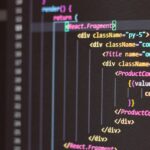An interpreter is a program or software component that directly executes instructions or statements written in a programming language without the need for prior compilation. It reads the source code line by line, converts it into machine code or an intermediate representation, and executes it immediately.
When a program is run through an interpreter, the following steps typically occur:
- Lexical Analysis: The interpreter breaks the source code into tokens, similar to the compilation process.
- Syntax Analysis: The tokens are analyzed to ensure they conform to the language’s syntax rules, just like a compiler.
- Semantic Analysis: The interpreter performs semantic checks, such as type checking and scoping rules, to verify the correctness of the code’s meaning.
- Execution: The interpreter executes the instructions or statements one at a time, typically using an internal evaluation loop. It converts each statement into machine code or an intermediate representation and executes it immediately.
The key difference between an interpreter and a compiler is that an interpreter executes the source code directly, while a compiler translates the code into a lower-level representation before execution. This means that an interpreter can analyze and execute code in a more interactive and incremental manner, allowing for quicker feedback during development.
Interpreted languages, such as Python, Ruby, or JavaScript, often use interpreters as their primary means of executing programs. Interpreters are also commonly used in scripting languages and command-line environments, where immediate execution and interactivity are important.
However, interpreting code can be slower compared to compiled languages because the interpreter needs to analyze and execute each line of code at runtime. To improve performance, some interpreters use techniques like just-in-time (JIT) compilation, where portions of the code are dynamically compiled and optimized for faster execution.

